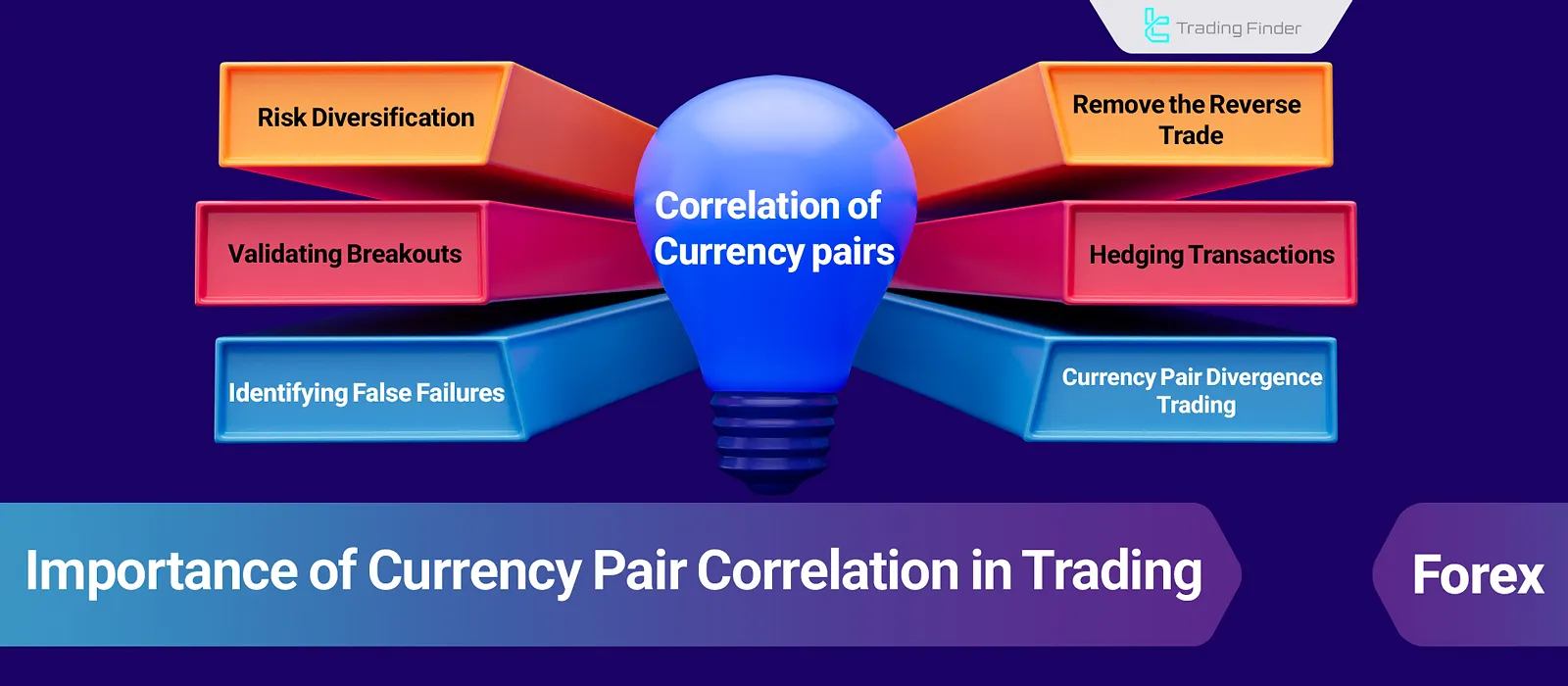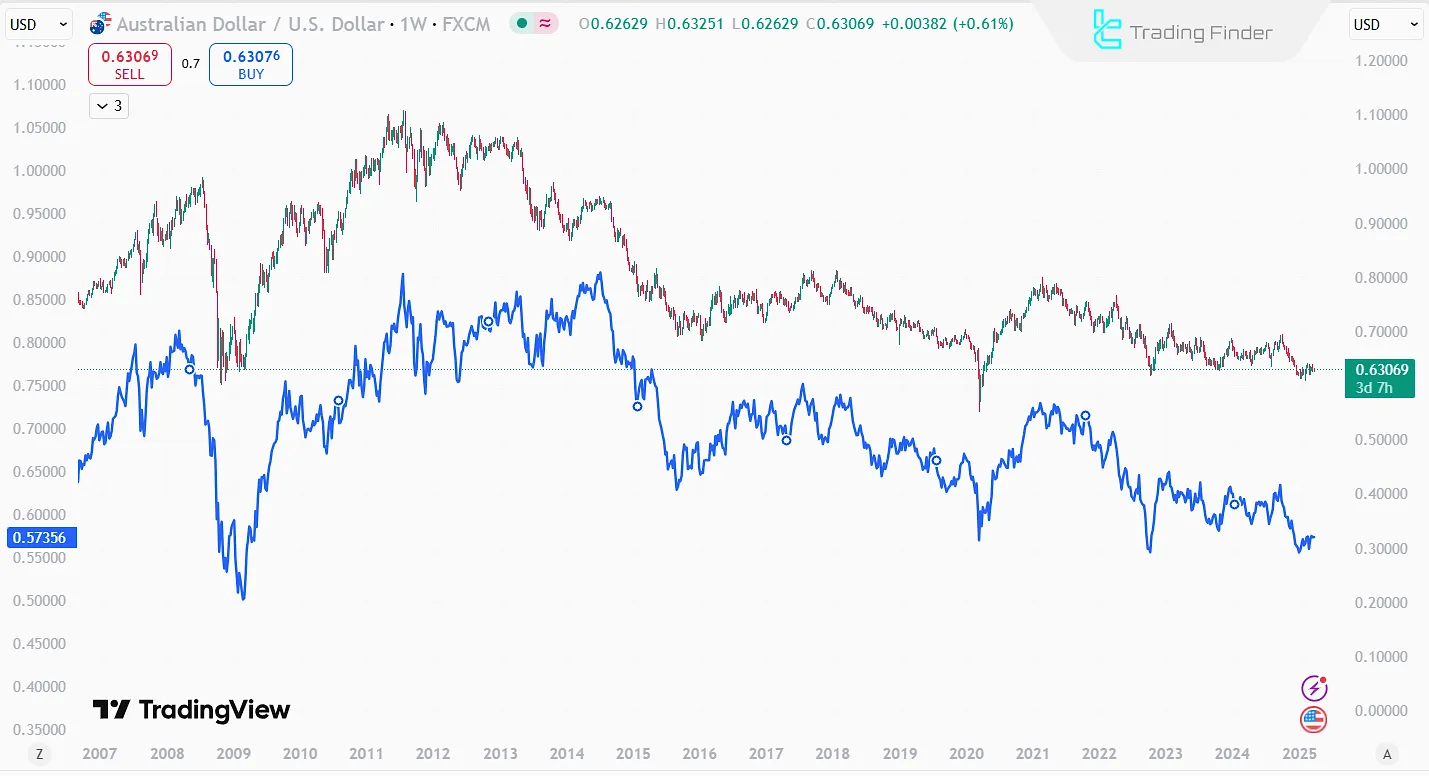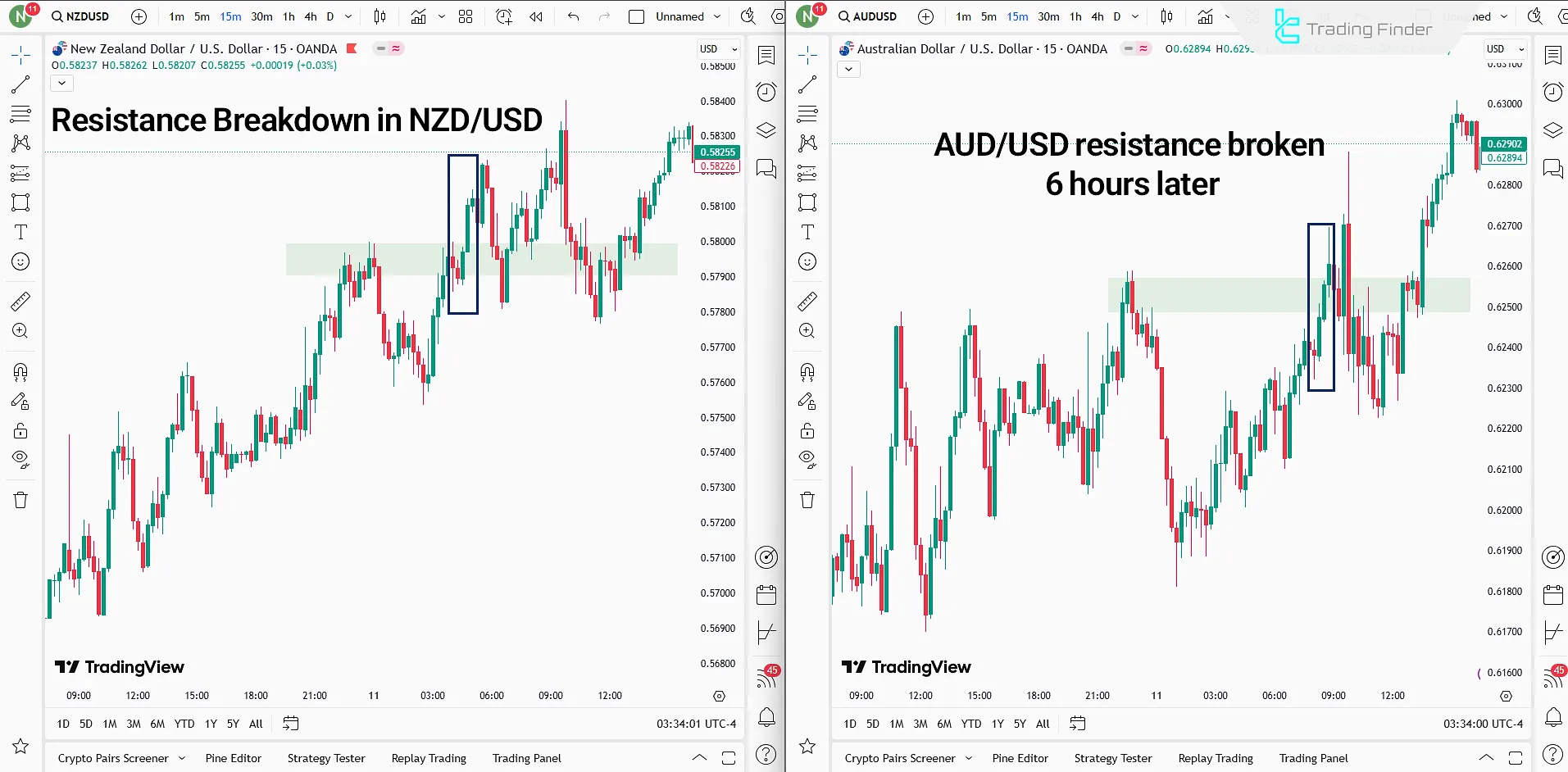In currency pairs with similar or completely opposite characteristics, a strong negative or positive correlation is formed; the correlation between currencies in Forex can be used to eliminate reverse trades and implement risk management techniques to prevent severe or unintended losses.

Why Is Currency Pair Correlation Important in Trading?
Understanding currency pair correlations enables smart hedging, precise risk control, and validation of technical breakouts. Here are 5 key reasons to monitor currency correlations:
- Eliminating counter trades
- Profiting from temporary divergences
- Hedging positions
- Diversifying risk
- Testing breakouts and technical confirmations
Note: To analyze the correlation coefficient (a metric showing correlation strength) for forex market, use TradingFinder’s Forex Correlation Tool.
1-Eliminating Counter Trades
By identifying pairs with strong negative correlations, traders can avoid simultaneous trades on them. Pairs moving in opposite directions may cancel out each other’s profits/losses.
Example: Opening a long AUD/USD and a short NZD/USD will neutralize the positions’ effects.

2- Profiting from Temporary Divergences
Occasionally, highly correlated pairs diverge due to political, geopolitical, or economic factors. Traders can capitalize on the expected reversion to correlation by entering positions aligned with the anticipated price reversal.
Example of Profiting from Divergence
During political uncertainty in Germany, EUR/USD weakens while GBP/USD remains stable or strengthens. Post-election, EUR/USD is likely reverts to its correlation with GBP/USD. A trader could profit by going long in EUR/USD.
3- Hedging Positions
Understanding the nature of assets and currency pair correlations is crucial for hedging and risk control.
For example, when market sentiment is risk-averse due to war, a trader may open long positions on gold and a safe-haven currency (such as the Swiss Franc).
However, since geopolitical risks are unpredictable and there is a possibility of a peace agreement, the trader also enters a long position in line with market risk appetite (Risk On assets).
In this scenario:
- If the war continues, the Risk On positionwill hit its stop-loss, but this loss will be offset by the gold and Franc positions reaching their profit targets;
- Conversely, if the war risk suddenly dissipates, the gold and Franc positionswill hit their stop-loss, but the hedging Risk On position will reach its target, compensating for part of the loss.
4- Testing Breakouts and Technical Confirmation
Comparing correlated pairs helps validate breakouts at key support/resistance levels.
For example, the NZD/USD currency pair has a positive correlation with AUD/USD and a strong negative correlation with USD/CAD and USD/CHF; Now, the NZD/USD currency pair has broken a significant technical support. In this case, there are two scenarios:
Confirmed Breakout in Scenario 1
Other correlated pairs (e.g., AUD/USD, USD/CAD) also break their respective key levels, confirming the trend.
False Breakout in Scenario 2
Other pairs do not weaken against the USD, suggesting NZD’s weakness is due to local economic/political factors.
You can use the TradingFinder tool to identify fake breakouts:
- False Breakout Indicator for MT4
- False Breakout Indicator for MT5
- False Breakout Indicator for TradingView
For example, in the image below, the similar fluctuations of the AUD/USD pair with the NZD/USD pair are highlighted; in the NZD/USD pair, a resistance level was broken, and three hours later, the AUD/USD pair also broke through a similar resistance level.

5- Risk Diversification
With highly correlated currency pairs, risk can be diversified.
For example, a trader has a bearish bias on the Dollar and intends to open a short position on EUR/USD with a 0.5% risk; To diversify the risk, they can short EUR/USD with a 0.25% risk and short GBP/USD with the remaining 0.25% risk.
In fact, if an unforeseen risk occurs with the euro, only 0.25% of the account will be affected.
Conclusion
Currency correlation is an effective tool for traders, helping to reduce unwanted losses and avoid unnecessary trades by eliminatingcountertrades, taking advantage of temporary divergences, and implementing smart hedging strategies.
Considering the correlation between currencies, a trader can distribute their trading risk across two currency pairs that have a positive correlation.





